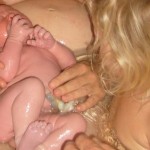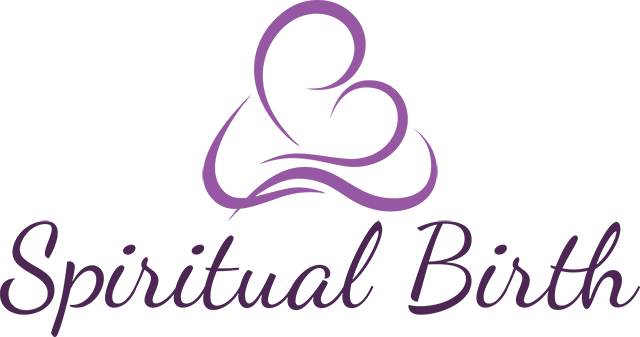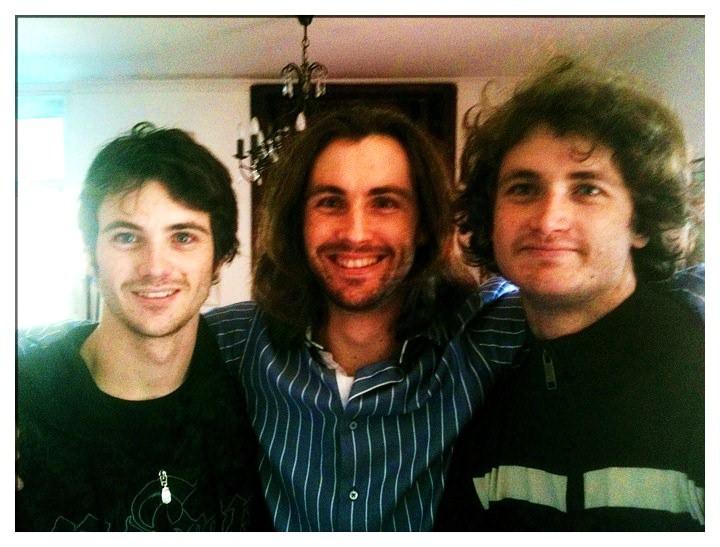During my mothering years and my simultaneous own personal growth, I was helped by learning about and understanding brain physiology. It helped me to understand why my baby cried incessantly, or why my toddler needed to lie down and express his discontent in a full blown tantrum.

Understanding what was happening for my children at their varying stages of development enabled me to stay calm, to pay attention, to not lose my temper or hit my children and to continue to love them and meet their needs. Not only did it help my mothering efforts, but I also came to understand myself more deeply, to become aware of my hurts and my rage and not to inflict them onto others, children and adults alike. A baby grows from the matrix of a mother’s womb tissue and in order to understand why it is so important to fulfill babies’ needs, it is helpful to understand how the brain-body symbiosis begins and develops.
When the psychologist Abraham Maslow coined the term ‘hierarchy of needs’ he understood that basic needs for warmth, shelter, attachment, hunger, thirst and comfort must be met before more diverse needs can be fulfilled. The need to self-actualize or to be creative can only be recognized and explored once our basic needs have been met. Our basic needs according to Maslow are physiological survival, safety, love-belonging and esteem. Our human self-concept is constructed from the idea of ourselves as whole functioning persons, not fragments or parts of ourselves.
The forces and feelings driving our behaviour are located largely in three different brain systems or three levels of consciousness, namely: the brainstem or 1st level of consciousness, the limbic system or the 2nd level of consciousness and the cortex or 3rd level of consciousness. The brain is also divided into two hemispheres which serve different functions. In part 1 of this article I shall elucidate on the first level of consciousness.
The Brainstem: First Line Consciousness
The brain stem processes instincts and survival functions, and is composed of medulla, pons and midbrain. Groups of

nerve cells here alert the higher levels of the brain to external stimuli and another group of cells (locus ceruleus) activates the central nervous system in response to pain and sometimes pleasure. Physiological survival and safety responses are managed by the brainstem including the pituitary gland. The brainstem takes care of sensations and vital functions such as breathing, heart rate, hormonal output, the alimentary canal, digestion and urinary processes. Interestingly, during the zygotic period after fertilization of the ovum, the first organ to develop is the alimentary canal and digestive system. Bodily sensations of fear, such as stomach ‘butterflies’ or pain, originate in the alimentary canal and digestive system. It makes the term solar plexus a little more meaningful.
After fertilization, an embryo develops from the 3rd week, the primal brain structures (the spinal cord, midbrain) developing simultaneously with the organs and limbs. The brain/body architecture morphs into recognizable form by the 11th week of womb life. The first three months of womb life are ostensibly the most critical period of human development, because this is the time when all internal and external brain and bodily structures develop. During this critical period, the exposure of an embryo to certain agents such as chemicals, drugs, alcohol, nicotine and or cortisol may cause major congenital malformations. http://www.embryo.chronolab.com/external_main.htm. Survival and safety are of paramount importance.
The period from the beginning of the 3rd month to the birth is known as the fetal period. The main characteristic of the fetus in this period is the rapid growth of the body and the brain and the maturation of the tissues. The brain functions in a partnership with the body and early embryonic memories are stored in the cellular structures of the body as well as the brain. http://www.ncbi.nlm.nih.gov/pubmed/15324991
The zygote, embryo or early fetus has primary needs which can be met by the parents. These primary needs require the mother and father to be nourished in the healthiest way, to be fit and not have toxins in their bodies. The mother needs to be calm and contained, in other words, happy and contented. She needs to know that her partner will support and help her. The father of the baby needs to be involved and taking full responsibility for his paternity. It is best if each member of the couple loves each other and that they exist in a peaceful society. This state of affairs creates the best possible conditions for the tiny being to develop in the womb.
Very early experiences of stress or traumatic events in the womb , such as lack of oxygen or nourishment, or increased cortisol levels when a mother is exposed to prolonged or severe stress, will affect the brain stem. Neuro hormonal and chemical receptors and pathways of the brain are permanently affected by stress in the early period of brain development of the embryo. http://www.nature.com/tp/journal/v1/n7/full/tp201121a.html A state of war, food shortages, famine, violence, conflict or loss will induce severe fear and anxiety in the parents, and particularly the mother, affecting the neuro-chemical development of the unborn child.
When, as adults, we experience inexplicable symptoms for example, sweating, increased heart rate and respiration, it may be that our primal brainstem memory is being triggered. Many people experience adult anxiety, panic attacks, fear, depression and other so called psychiatric symptoms, which may well be related to the very early months of womb experience. http://onlinelibrary.wiley.com/doi/10.1111/j.1365-2826.2008.01659.x/pdf Before the formation of our brain structures, life experience is remembered in the cellular structure. Thus a sperm and an ovum contain bundles of data, gathered from our ancestors and handed on to the next generation. A zygote and early embryo holds cellular memories of womb events in the body. No information is ever lost. Think about this. In terms of trauma it means that whole groups of people may be carrying memories of trauma that many generations ago and echoes of which are stored in the body and particularly in the brain stem. Unfortunately, because these memories are not easily retrieved, humans tend to act out their traumatic imprints on others and the world around them.
It is encumbent on us to prevent unnecessary trauma occurring to our offspring, and therefore recommended that each one of us, both individually and collectively, become conscious of our own traumatic imprints and commence a healing journey, both alone and with others. This link to Shirley ward’s article describes how people feel when they are assisted to relive their early conception experiences. http://primal-page.com/ward2.htm
Love, the way humans feel love, is the greatest force in the universe. It is love that will help us heal and reassemble our past and our future. It is love that will help us to educate, to guide and to show others how to conceive in love.
This post deals with the effects of stress on the first line of consciousness and I will continue with the second level of consciousness in part 2.


1 thought on “How Brain Behaviour Works from Conception to Adulthood – Part 1”